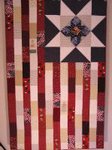Updated 3/2017-- photos and all links (except to my own posts) removed as many no longer active.
In the 2009 review (2nd reference below), Voineskos and colleagues did a literature review of skin graft donor-site dressings. They noted that although there is no clear evidence that moist dressings are any better overall when compared with dry dressings, there is evidence that moist dressings tend to be less painful than dry dressings.
In the 2009 review (2nd reference below), Voineskos and colleagues did a literature review of skin graft donor-site dressings. They noted that although there is no clear evidence that moist dressings are any better overall when compared with dry dressings, there is evidence that moist dressings tend to be less painful than dry dressings.
Donor sites take an average of 7 to 21 days to heal, depending on their size, location, and the patient's health status.
This latest study (first article referenced below) compared Aquacel and a modified (perforated) polyurethane dressing modified (MPD). The study is a prospective randomized double-blind clinical trial which included 50 adult patients. The authors state (bold emphasis is mine):
The ideal dressing should protect the wound from desiccation and at the same time permit gas exchange to accelerate reepithelialization. It should be impermeable to exogenous microorganisms, comfortable for the patient and the ward staff and associated with only minimal labor input. Moreover, the dressing should be flexible and pliable to permit conformation to irregular wound surfaces. Resistance to linear and shear stress are required as well as good tensile strength to resist fragmentation and retention of membrane fragments when removed. It should, furthermore, be adaptable to the varying dimensions of donor sites and, in spite of everything; it should also be of low cost. Existing dressing materials meet some of these criteria but fail to fulfill all of them, especially in larger donor sites.
Dornseifer and colleagues had previously (4th reference) noted that the “single disadvantage of polyurethane film dressings is an uncontrolled leakage” which they solved by modifying it by perforating the polyurethane film. This permits a controlled leakage into a secondary absorbent dressing.
They chose to compare this MPD to Aquacel ® (ConvaTec, Skillman, NJ, USA), a sodium carboxy-methylcellulose hydrocolloid polymer that is claimed to have a high fluid-absorptive capacity and was also described to be a new preferred donor site dressing. (5th reference)
Half of the skin graft donor sites were dressed with an application of Aquacel(R) and half with MPD. The dressings were kept unchanged for ten days at which time they were removed and the epithelialization rate of both sites was evaluated. Pain scores were assessed according to a 0 to 5 numeric pain scale every postoperative day, as well as during dressing removal.
In this small study, MPD was found to best Aquacel ®. More MPD donor sites completely reepithelialized by 10 days than the Aquacel ® sites (86.4% vs 54.5%).
MPD was significantly less painful until and during removal of the dressing (p < 0.001). Pain at the donor site during the postoperative period was consistently low after wound coverage with both materials, considering that 90% of the values assessed by the six-items pain scale were equal to or less than 1 (minimal intermittent pain) at both sites.
However, when patients were asked to compare both sites, a significantly higher percentage of MPD sites were rated superior to the Aquacel® sites
Dornseifer and colleagues note the costs of the Aquacel® dressing turned out to be about four times more expensive, relating to a donor site of 8 x 20 cm2 and depending on the
respective price level.
respective price level.
Scarring was inconspicuous in both groups 60 days following surgery and no significant differences were detected between the MPD and Aquacel® treated donor sites.
REFERENCES
1. The ideal split-thickness skin graft donor site dressing: a clinical comparative trial of a modified polyurethane dressing and Aquacel(R); Dornseifer, Ulf; Lonic, Daniel; Ivo Gerstung, Tristan; Herter, Frank; Max Fichter, Andreas; Holm, Charlotte; Schuster, Tibor; Ninkovic, Milomir; Plastic & Reconstructive Surgery., POST ACCEPTANCE, 15 June 2011; doi: 10.1097/PRS.0b013e3182268c02
2. Systematic Review of Skin Graft Donor-Site Dressings; Voineskos, Sophocles H.; Ayeni, Olubimpe A.; McKnight, Leslie; Thoma, Achilleas; Plastic & Reconstructive Surgery. 124(1):298-306, July 2009; doi: 10.1097/PRS.0b013e3181a8072f
3. The theoretically ideal donor site; Birdsell, D. C., Hein, K. S., Lindsay, R. L.; dressing. Ann Plast Surg 2: 535-537, 1979.
4. The ideal split-thickness skin graft donor site dressing: rediscovery of polyurethane film; Dornseifer, U., Fichter, A. M., Herter, F., et al.; Ann Plast Surg 63: 198-200, 2009.
5. Clinical comparative study of aquacel and paraffin gauze dressing for split-skin donor site treatment; Barnea, Y., Amir, A., Leshem, D., et al.; Ann Plast Surg 53: 132-136, 2004.






